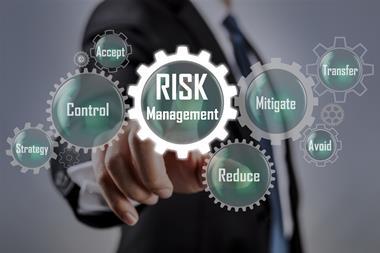Attention to intellectual property is a potential blind spot that may require more forceful remediation - Beazley
COVID-19 has been the biggest catalyst of operational and strategic change in a generation, forcing businesses to adapt their technology infrastructure to new ways of operating.
Not only has this led to greater threat of disruption by competitors, it has also opened the door to cyber criminals who have moved fast to exploit staff, processes and networks that were suddenly exposed beyond the corporate firewall.
This is according to a report from Beazley ‘Spotlight on technology risk’, which reveals that a range of technology risks have topped executives’ risk radars on both sides of the Atlantic since the pandemic hit. Together, these risks were ranked much higher than any other category of risk by the executives surveyed.
Paul Bantick, global head of Cyber and Technology at Beazley said: “Technology risk ranking as highly as it does even during a pandemic is very telling. Strong awareness of the risk is encouraging.”
“However, technology is an area where the threat vector evolves constantly, and businesses need to continue updating risk management processes and work with partners that can support them in identifying and mitigating tech-based risk.”
The latest ‘deep dive’ report follows the publication of previous ‘top level’ risk and resilience reports that provide a benchmark for business resilience to and appetite for technology, business, political & economic and environmental risk post pandemic.
Overall, 37% rank technology their top risk category with business risk coming second at 33%, followed by environmental risk (including pandemic) at 18% and political & regulatory risk at 12%.
Cyber threat felt most strongly in US
Cyber risks, which include IT-based threats affecting national infrastructure through to individual customer data, data leak or employee error, are the highest ranked within the technology risk category.
They are of particular concern in the US where 38% of leaders rank cyber risk top vs 29% in the UK. Furthermore, in the US 55% of businesses feel very prepared to anticipate and respond to cyber risk vs just 34% in the UK.
Overall, the sectors which feel most exposed to cyber threats include energy and utilities, with 40% of businesses ranking this their top risk, followed by retail and technology media and telecoms (TMT), both with 38% of companies ranking this risk top.
Raf Sanchez, International Breach Services manager at Beazley, said: “Although many organisations have invested heavily in technology to protect their systems and data, the cyber-attack landscape is constantly shifting. Cyber criminals are increasingly well-funded and innovative, making constant vigilance by organisations a necessity.”
Disruption: the fear of keeping pace
Disruption risk, or the failure to innovate and keep pace with new developments, customer demand or market shifts is ranked second in the technology category, with 30% of business leaders identifying it as their key risk.
Disruption ranks this highly because UK respondents are particularly concerned by the threat that it poses – with 32% ranking it top vs just 28% in the US. In terms of the ability to anticipate and respond to disruption risk, well under half (41%) of businesses overall reported they felt well prepared.
Investing in tech pays off
Tech risks are defined in our research as not adapting to changing technology developments and opportunities. Only 26% of business leaders in the US and UK ranked this risk top.
However, 44% of overall businesses report they feel ‘very prepared’ to manage tech risk. This high level of resilience is likely to reflect the fact that successful companies have harnessed a combination of astute hiring and investment to ensure they manage this threat appropriately.
The IP blind spot
Intellectual property (IP) risks, the failure to recognise and protect the value of assets such as technological know-how, trademarks, patents or other intangible assets came bottom in the technology risk ranking with only 11% of business leaders overall ranking this a primary concern.
Given that intangible assets are the predominant source of economic value for many businesses, accounting for 75% of business value globally, the low-risk ranking assigned to IP is a potential blind spot that may require more forceful remediation, particularly given that only 40% of businesses report they feel well prepared to manage it.




















No comments yet